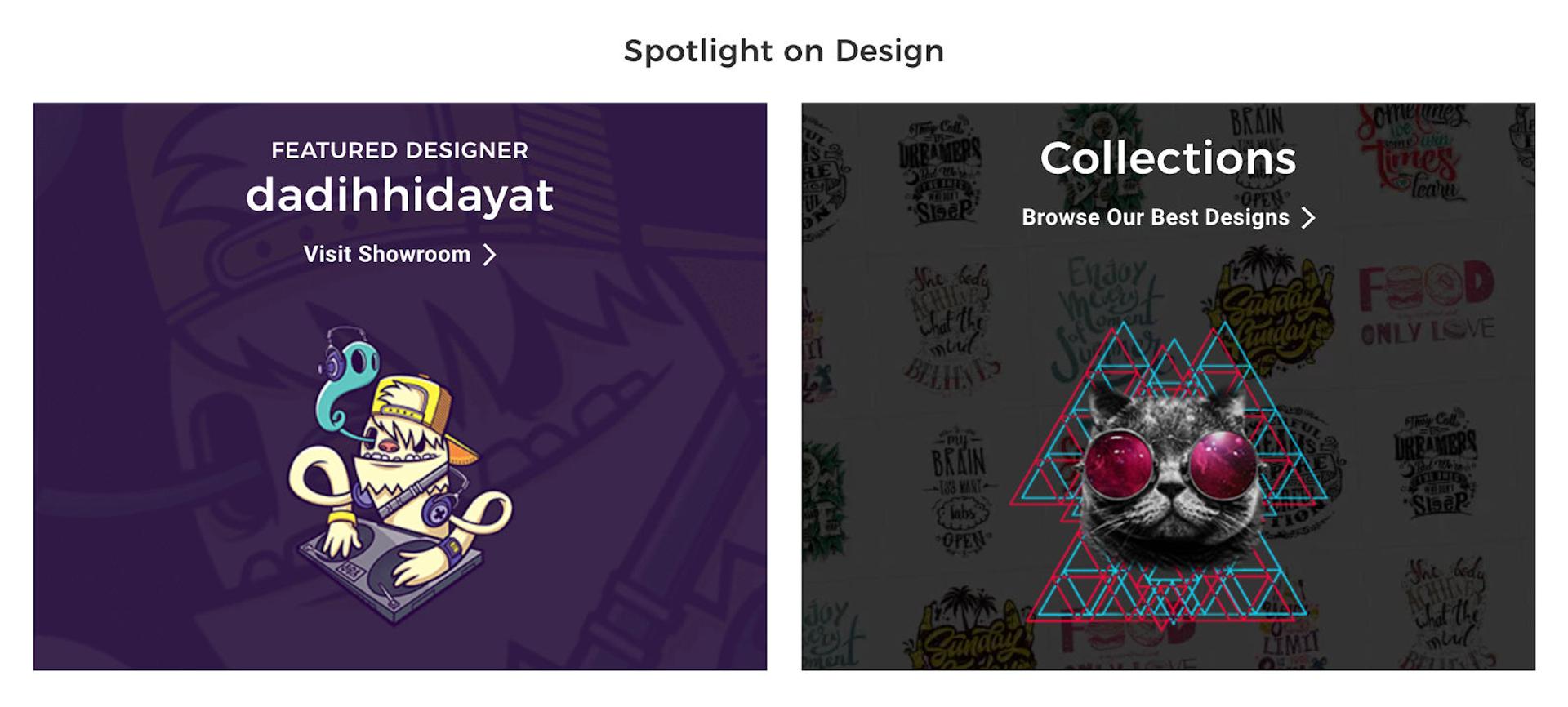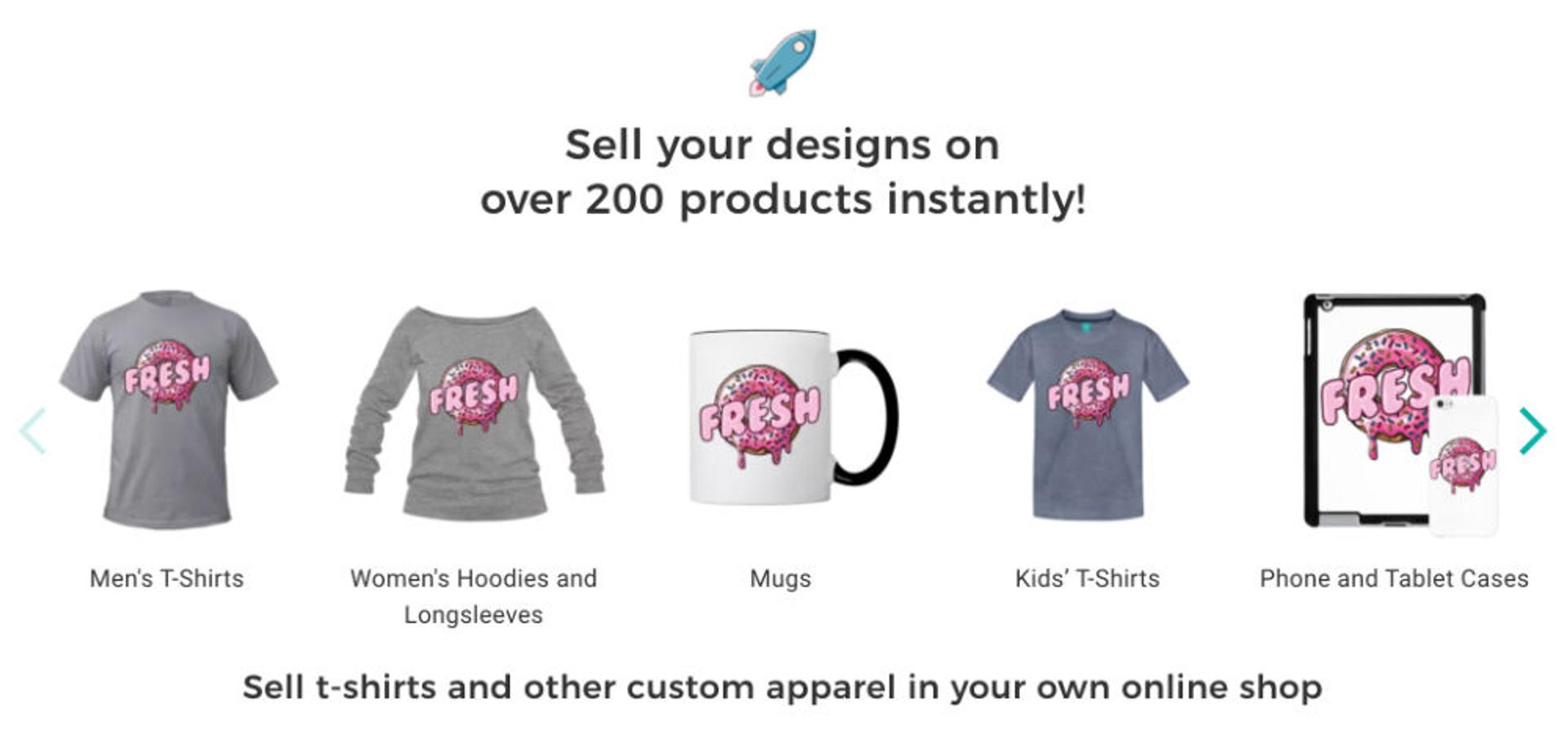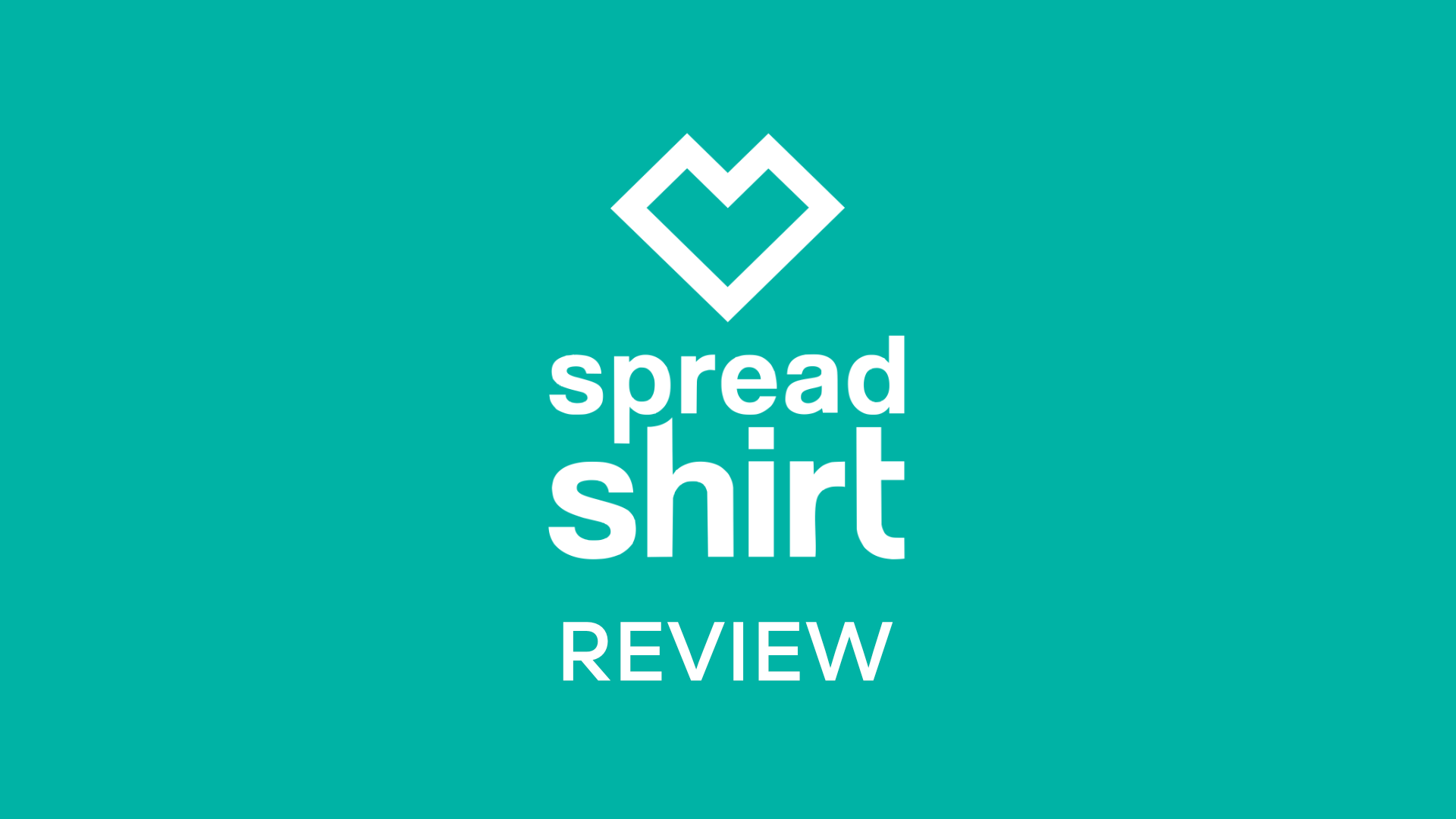If you’re planning to make money off your designs, there are plenty of companies out there looking to make your job a whole lot easier. Among them is Spreadshirt, a German and now global print-on-demand company for producing and distributing clothing and accessories.
Choosing the right POD company to partner with is pretty exhausting, so in this review I’ll make sure to cover key details like ease-of-use, product selection and commission structure. Ultimately, it will help you make an informed decision about whether or not Spreadshirt would fit your business needs.
Why Partner With Spreadshirt?
The basic idea is pretty simple – you’ve come up with a design that draws eyes. Nobody’s going to buy the design on its own, but stick it on a T-shirt or iPhone case and suddenly they’re reaching for their credit card.
That’s why print-on-demand platforms like Spreadshirt exist. They provide a slick platform letting you easily upload your designs and provide a means for customers to buy clothes or accessories with your cool design on it.
Without Spreadshirt, selling your branded merchandise would require thinking about:
- Inventory Management
- Printing
- Point of Sale
- Worldwide Shipping and Returns
- Customer Service
All of that would force you to divert time and energy away from the important stuff—coming up with new graphics and marketing your merchandise. Partnering with Spreadshirt takes all of that (and more) out of the equation.
Spreadshirt Marketplace and Spreadshop: 2 Ways To Make Money
Having someone take care of business operations is great, but you’re probably wondering how much money is left on the table. In other words, how much of a cut do Spreadshirt take when merchandise featuring your design gets sold?
The answer will depend on whether you decide to simply sell your designs on the Spreadshirt Marketplace or open your own shirt ‘Spreadshop’.
Selling your designs on the marketplace: ~$5.00 per sale
The simplest way to start earning as a Spreadshirt partner is to make available designs you own on clothes and accessories in the Spreadshirt Marketplace.
The Spreadshirt Marketplace is the place customers go to browse all the designs of Spreadshirt partners. Customers might end up discovering one of your designs if they search for a topic you’ve tagged it with, say ‘Movember’ or ‘Pug’.
If a customer buys a product featuring your design, you receive a fixed ‘design fee’ that depends on the type of product purchased. A men’s T-shirt with your design will net you $3.00, whereas a premium hoodie with the same design nets you $7.50.
The upshot of this is that you don’t have to do any marketing. With over 100,000 daily visitors to Spreadshirt’s marketplace, you’re almost guaranteed to have some people stumble on your design. After that, it’s fingers crossed!

The downside is flexibility. You don’t have any control over the price. If you want to be earning more than $3 for each T-shirt that gets sold, tough luck.
Opening your own Spreadshop: You set the price
More entrepreneurial sellers will naturally be drawn to opening up their own online store – a Spreadshop.
If you go down this route, you’ll create your very own storefront with its very own Spreadshirt subdomain (shop.spreadshirt.com/<your_shop_name>).
You’ll choose from any one of the five available base themes, plus be free to customize the look and layout of your shop.
Fortunately, the base themes are already quite snazzy and have important pages (Privacy Policy, TOC etc.) baked in. There’s very little effort required to get things running on your part.

You also have complete control over the price of your items. Your profit margin will simply be the markup you set on top of Spreadshirt’s base price of the product. You can find a list of the base prices here.
Although opening a Spreadshop gives you more control over your business, people won’t magically land on your Spreadshop. You’ll therefore need to market your merchandise yourself, be it through sharing your storefront URL on social media channels or running PPC ad campaigns.
A combination of both
In reality you’ll probably want to sell your designs on the Spreadshirt marketplace and open up your own Spreadshop.
This way, you seize the best of both worlds and maximize your potential income. You gain the free traffic via the marketplace and you also have your very own shop to market the way you want.
Will Selling On Spreadshirt Cost Me Anything?
No. One of the best parts about selling on Spreadshirt is that it doesn’t cost you anything. Even opening up your own Spreadshop and hosting it on their web servers is free.
This is possible because products are only printed on demand, i.e. when a customer places an order with your design on it.
This means there you incur zero financial risk when selling on Spreadshirt. Of course, your profit margins are potentially a lot slimmer than they would be if you were in full control of your business operation.
Product and Print Quality
I’m not going to go into much detail here, namely because the print quality depends so much on the graphic’s source quality and suitability for direct-to-garment (DTG) printing. Of course, things become even more difficult to compare when you’re considering products like mugs which undergo a completely different printing process.
Nevertheless, the customer satisfaction ratings of Spreadshirt products is above the industry average and the samples I’ve received have been consistently excellent.
Unlike some other companies which outsource the printing processes to independent print houses, Spreadshirt owns and operates all of its printing factories which guarantees consistency in output quality.
Other Things To Note
Uploading Designs To Spreadshirt
Getting your designs on the Spreadshirt platform is a simple process, and their platform is one of the most intuitive ones around.
Compared to most other POD companies (who often just accept PNG), Spreadshirt are flexible when it comes to file formats. You can upload your designs in any of the following:
- .jpeg
- .png
- .gif
- .svg
- .ai
- .cdr
Uploading in vector-based image formats (.svg, .ai, .cdr) is recommended where possible as it ensures the best print quality possible.
Waiting For Your Design(s) To Be Approved
Each and every design you upload needs to be approved by someone at Spreadshirt. This typically takes 3 or 4 days – a common source of criticism for the platform.
Should you find this unacceptable, setting up your own shirt shop on a dedicated eCommerce platform like Shopify and sourcing products from a B2B print-on-demand company such as Printify is the way to go.
Product Selection
Despite the word ‘shirt’ being in the company’s name, Spreadshirt boasts an impressive range of products which goes far beyond basic apparel.

Baby shirts, duffel bags, iPhone cases and enamel mugs are just a few of the things you can slap your design on.
However, their product selection falls short to the likes of Redbubble and Society6 who are less clothing-centric and add things like shower curtains, coffee tables and stationery to the mix.
Additional Exposure On External Marketplaces
If any of your designs end up being successful on the Spreadshirt marketplace, it is possible that Spreadshirt will handpick your designs to be placed on apparel in any of the following marketplaces:
- Amazon in the UK, USA, France & Germany
- eBay in the United States & Germany
- Rakuten and Sears in the US
- Cdiscount in France
This has the potential to give you a significant boost in exposure and income. Unfortunately, you don’t have any control over this selection process so you’ll need some luck on your side.
By the way, it’s not at all uncommon for POD platforms to list qualified designs in other websites. However, Spreadshirt just does a better job when it comes to getting products listed on European marketplaces.
Should I Sell On Spreadshirt?
Since selling on Spreadshirt costs you nothing, there’s really no risk in putting your designs up on their platform. Worst case scenario: no one buys your stuff and you don’t get paid anything!
You also keep legal rights to the designs you upload, so you’re still free to sell your designs elsewhere.
But the question you should be asking is ‘is there a better alternative?’
Companies like Spreadshirt wouldn’t survive without the army of talented independent designers behind them. Many designers are perfectly happy to share their profits, but you might not be.
If designing graphics is a hobby and you’d like to make some money as a bonus, Spreadshirt is definitely worth looking into. They take care of all the business operations and are a great set-it-and-forget-it platform to sell your art.
However, while listing designs and getting free exposure on the marketplace might net you some side-income, it just won’t scale as well as running your own shop.
If you’re looking to set up your own shop, Spreadshirt’s Spreadshop is a simple and effective means of doing so. However, it locks you into the Spreadshirt ecosystem and the base price of products will always be determined by them.
More business-minded sellers will be able to increase their profit margins by keeping their online storefront and print-on-demand supplier separate. Today, this is easily achieved by using a fulfillment-only supplier like Printify along with an eCommerce platform like Shopify.
This would give the flexibility of shopping around for the cheaper suppliers on a per-product basis. Not only that, but a well thought out online storefront you build, ground up, will likely convert better than the rather generic themes offered by Spreadshirt.
Overall, Spreadshirt is a solid print on demand supplier, especially if you’re dealing with European customers. It’s definitely worth listing your designs on the platform, but there are superior alternatives when it comes to setting up your own online T-shirt store.
